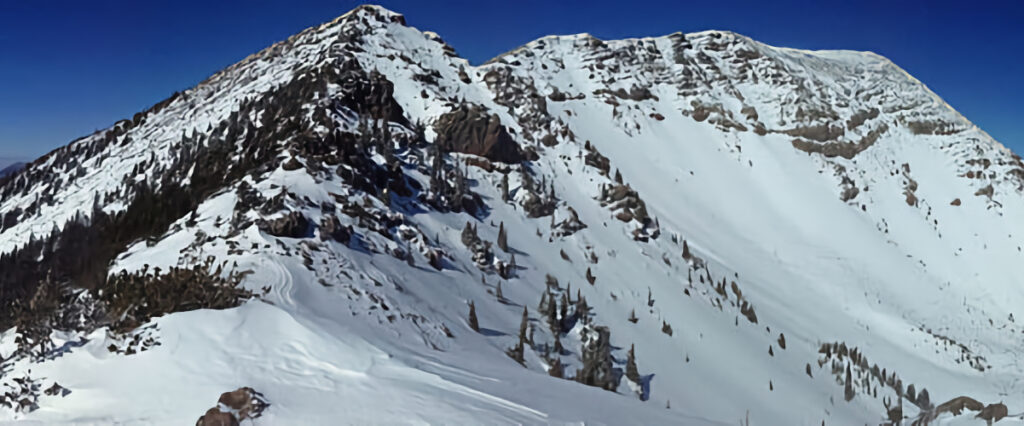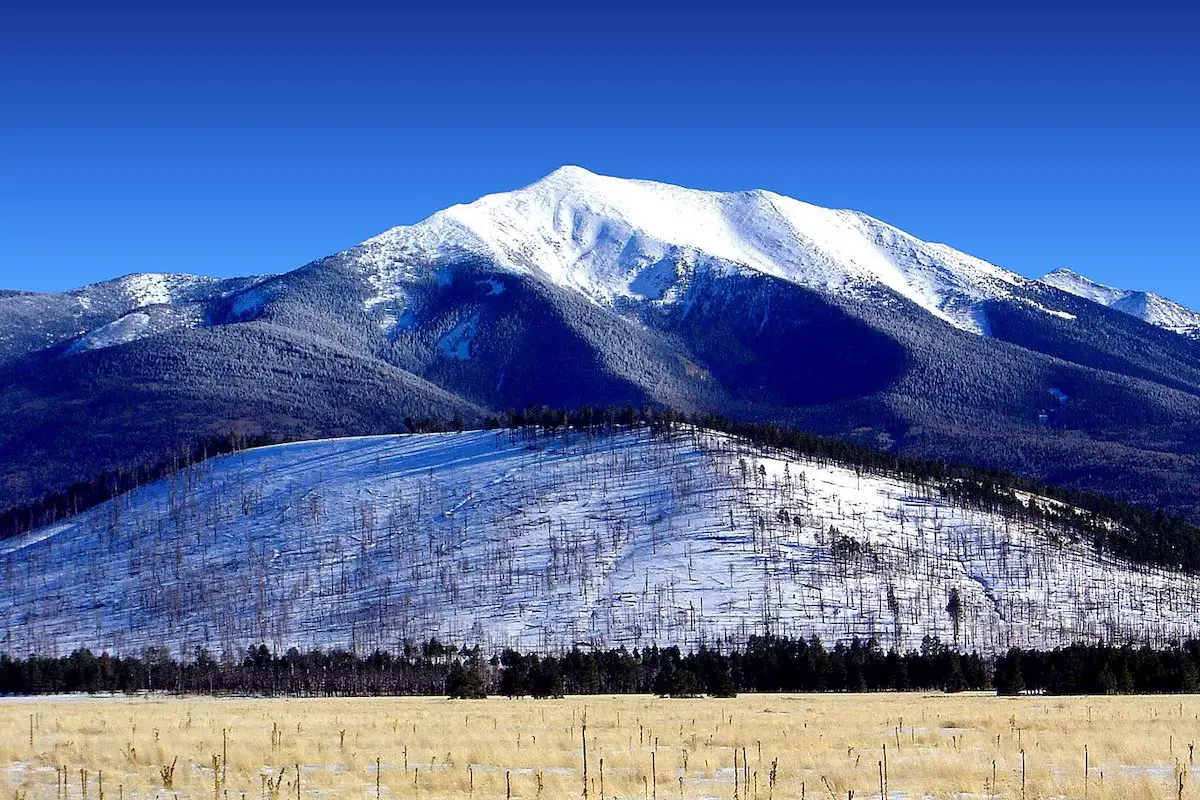Hiking in winter conditions can be challenging and even treacherous at times. A hiker attempting a snow-covered mountain in Arizona found this out the hard way recently when he ended up lost and stranded on the state’s highest peak after dark. Fortunately, he was able to call 911 for assistance, and a search and rescue team was dispatched to help get him down safely. These things happen on occasion, and thankfully the situation didn’t end in tragedy. The hiker probably even learned a valuable lesson that could help him be more mindful in the future, right?
That wasn’t actually the care for this particular hiker, who found himself in the exact same situation on the exact same mountain just one day later. And yes, he did have to be rescued for a second time in just two days.

Hiking Arizona’s Humphrey’s Peak
The story begins on March 3, when a 28-year old man from Brooklyn, NY named Phillip Vasto found himself in Flagstaff, AZ, on business. After wrapping up his work, Vasto found himself with a little time on his hand and decided he wanted to go for a hike. He selected a trail that led to the summit of nearby Humphrey’s Peak, which is the highest point in the state.
The summit trail is roughly 10 miles (16 km) in length and includes more than 3000 feet (914 meters) of elevation gain, culminating at the 12,637-foot (3851 meters) summit. The trail was even covered in snow at higher elevations, which made the trek harder and slower. Still, Vasto felt he had plenty of time to reach the summit and get back down, even though he didn’t start the hike until 2:30 PM.
The hiker greatly overestimated his own abilities and speed and ended up getting caught on the mountain after dark. He soon became disoriented and lost the trail, making it difficult and dangerous to descend back to the trailhead. That’s when he put in a call for assistance, with the SAR team later finding him at about 10,000 feet (3048 meters), where they were able to help him in getting back down.

Humphrey’s Peak Round 2
According to Adventure Journal, after he was rescued off Humphrey’s Peak, Vasto was advised to wait a few months and return after the snow had melted. Local hikers on the SAR team told him that the hike would be safer and faster in the spring. But since he was in town for just a limited amount of time, the visiting Brooklynite decided to ignore those warnings and have another go at the mountain the very next day.
On his second attempt, Vasto hit the trail much earlier in the day, starting the trek at 9:30 AM. During the hike, he connected with two other trekkers, and the three of them hit the trail together. But by 3:30 PM, they still hadn’t reached the summit, and Vasto’s companions decided to turn back. However, he elected to push on and soon found himself in trouble once again.
At some point, Vasto slipped on the trail and injured his leg, which led to him feeling sick and lightheaded. Once again, he was unable to find his way back down on his own and put in another call to 911 for assistance. Another hiker that was passing by noticed that Vasto was in distress and stayed with him until the SAR team could arrive to help. This time, they dispatched a helicopter to pluck him off the mountain.
An Ongoing Debate
Naturally, stories like this one tend to revive a long-standing debate in the outdoor community over who should pay for the rescue. In Arizona, SAR teams are funded using taxpayer dollars, which must be diligently accounted for. And considering how many rescue operations are conducted in and around the Grand Canyon each year, there is a need for these kinds of services.
Naturally, when a story like this one crops up, there is always a vocal contingent that demands the person being rescued pay the bill. The counter-argument is that if we start charging for the rescue operations, people will be more reluctant to all for assistance and could end up dying in the wild. The goal is to bring these people home safely and not make anyone worry about being given a very expensive bill afterward.
In Vasto’s case, having to call in a SAR team two days in a row only makes this story a more salacious one. Thankfully, he was rescued on Humphrey’s Peak both times he needed some assistance and is now safely back home. My guess is he’ll be a little more cautious the next time he embarks on a winter adventure.
- Gear Review: The Xero Scrambler Mid is an Ultralight Hiking Shoe for Spring - March 1, 2023
- Gear Review: Yeti Roadie 48 Wheeled Cooler - August 18, 2022
- Kristin Harila Continues Pursuit of 8000-Meter Speed Record - August 16, 2022
